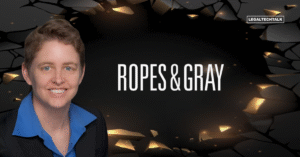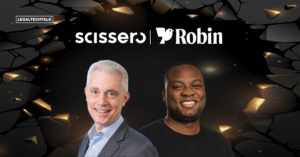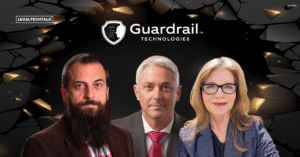In this insightful interview, Kailee Goold, VP Litigation and Legal Operations at Cardinal Health, shares her vision for transformative changes within the legal industry. She discusses the need for a business-oriented mindset, innovation, and value-driven practices, shedding light on the challenges and solutions to achieving this paradigm shift.
From internal alignment to encouraging innovation, Kailee provides valuable insights that can shape the future of the legal profession. Additionally, she offers guidance to legaltech startups seeking to make their mark in this evolving landscape.
Bradley Collins: Hi Kailee, great to chat, to start the interview, what are the biggest changes you’d like to see in the legal world, and why?
Kailee Goold: We should take a page out of our business partners’ book. I’d like to see in house, law firms, and vendors create environments that encourage innovation and focus on value. And I mean this broadly.
We often look to add tech and people to solve problems, but we should be consistently evaluating our goals, recalibrating, and stopping things that are not adding value. Teams should be diverse and provide room for new ideas. Teams should be clear about what matters and tailor resources accordingly. Firms, vendors, and in house counsel should define a “win” for the matter, communicate concisely, and provide 360 feedback. Adopt a project management mindset, leverage data analytics, take calculated, informed risks. Measure performance. Pivot when the original plan isn’t yielding results. When legal teams operate with a more business, value-oriented mindset, the “impossible” is possible.
Bradley Collins: What is it you think that is preventing the changes from happening, what can we do about it?
Kailee Goold: So many factors play into this. Lawyers are typically not trained in these areas. We are generally risk averse. Financial incentives are usually not aligned. Legal teams like the paint by numbers approach they’ve been using for years. It is comfortable and how they have won in the past. It’s hard for people to see there is a better way to do things and change.
It sounds like a big ask, but each person can start moving the needle in small ways. There is a role in this progression for all players: inhouse and at firms and vendors. Start with partnership, internally and then externally. Identify the problem you are trying to solve and work together to generate a plan. Whether it is working with IT to identify a tech solution to an internal workflow gap or partnering with a law firm to increase opportunities for diverse talent – state the problem. Get stakeholders on the same page: what is the plan to solve, how will we know it is working, how will we report out to show the value add? We have to create spaces where it is okay to fail. It is about understanding the risks, aligning on risk tolerance, and taking some chances where you can.
Some ideas of all sizes I’ve seen that reduce cost, increase efficiency, and get results:
Write better emails and improve meetings. In email subject lines, state “FYI” or “Input Requested by [Date]” so the ask is clear to the reader. Every meeting invite should have a goal or purpose in the body of the invite so teams know the mission before showing up.
Law firms and vendors adding non-attorneys to matters to project manage, help with the budget, identify opportunities for workflow improvement.
Instead of filing a single-spaced, mediation statement in the form of a letter, each side gets a one-hour meeting with the mediator in advance of the mediation. Use PowerPoint to more effectively articulate arguments, answer mediator questions, and get the crux of the issues. eDiscovery vendor, law firm, and inhouse aligning early on discovery plan creating opportunity to push our preferred scope and methods. Firms proactively providing lessons learned throughout the matter so we can alter strategy and guide the business in real time.
These improvements come easier when both sides are aligned on goals, open to feedback, and comfortable sharing new ways of doing things. And don’t miss the critical step of communicating the value add to key stakeholders to encourage curiosity and increase risk tolerance.
Bradley Collins: Finally – what is your innovation roadmap looking like at Cardinal Health, and what advice can you offer legaltech startups looking to get their foot in the door?
Kailee Goold: While not a provocative answer, we are tightening up our blocking and tackling – internally and externally. We are relentless on the execution of the basics. For example, get invoices in on time and abide by our billing guidelines. We are not interested in launching a transformational AI project with you or giving you our next multi- million-dollar deal if you struggle to meet our finance deadlines.
Internally, we consistently evaluate what we are working on and why. Is the way we are spending our time match the goals of the business? Is this the most effective way to staff and manage this portfolio of work? Two examples: we’ve bucketed like work across areas and increased our use of alternative legal service providers to support projects.
We are also focused on optimising what tools we have. Too often, teams get new software and do not use it to its full potential leading to a perceived need for another solution in 3 years. Like many companies, we’ve recently invested in software to ensure our teams have what they need to work in our hybrid, global workplace. We continue training and measuring usage to maximize adoption. We are also enjoying the data and analytics features provided by our billing software. It has helped us project spend and evaluate if we are appropriately tailoring staffing to risk.
We have many projects on the roadmap and my vision board. The starting point with these is identifying true need, appetite for the change, and funds. Teams have a day job to do. People can only absorb so much change at a time. We need to be realistic, sure of the impact a new solution will have, and gain support before requiring behaviour change.
My main advice for legaltech startups is to get on our radar and then be patient. We need to know you exist so the free relevant webinars (that are not a straight up sales pitch), industry surveys and reports, LinkedIn posts, etc. are valuable. But understand inhouse are looking for tech solutions at different points along the need spectrum: needed this yesterday to staying informed for future readiness. If you are lucky, you partner right now. Most often, it will take time before the inhouse team gets through current priorities and is prepared from a resource and need perspective to partner. I regularly send polite no emails stating the offering is not within our current priorities, but the person is now in my virtual rolodex.
Key takeaways:
1. Embrace a Business-Oriented Mindset: Legal professionals should focus on creating environments that encourage innovation and value across in-house teams, law firms, and vendors. This includes consistently evaluating goals, adopting a project management mindset, leveraging data analytics, and taking calculated risks to achieve better results.
2. Collaborative Problem-Solving: To overcome resistance to change, legal professionals should foster partnerships, both internally and externally, and identify specific problems to solve. Effective communication and alignment on goals and risk tolerance are key to driving meaningful change.
3. Optimise Existing Tools and Processes: Rather than constantly seeking new solutions, legal departments should maximise the use of existing tools and processes. This includes improving communication through better emails and meetings and enhancing efficiency by adding non-attorneys for project management and budgeting. Moreover, focusing on the execution of basic tasks and aligning work with business goals can lead to substantial improvements in legal operations. Legaltech startups should make themselves known to in-house teams and be patient, understanding that readiness for innovation varies within organisations and may take time to develop.








